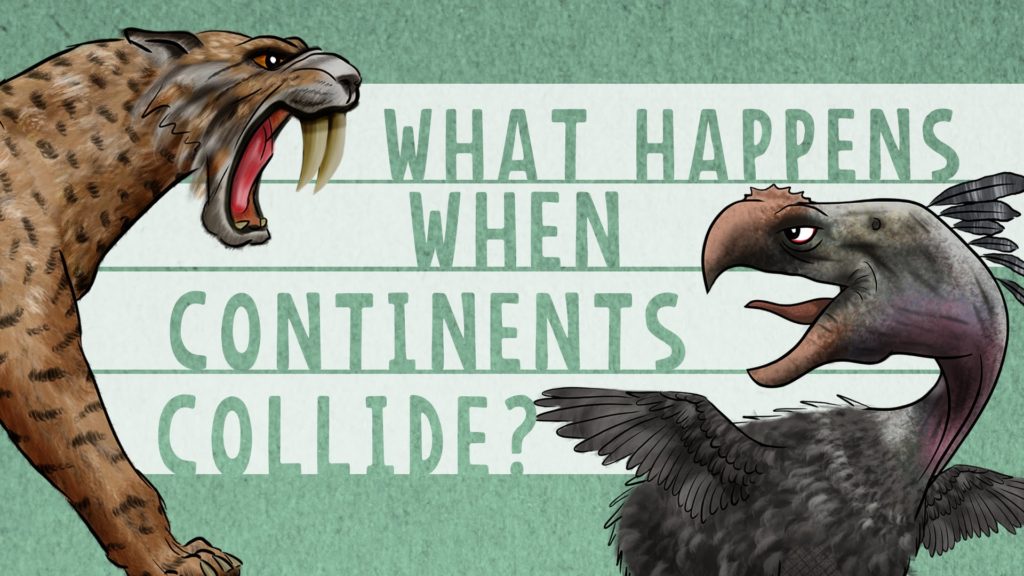What happens when continents collide?

Have you noticed how North and South America are two separate continents, yet there is barely any distance separating the two? We can all attribute this story to the theory of Plate Tectonics. Let’s read more about it below.
Contents
What does the concept of Plate Tectonics state?
We know that the outermost layer that makes up the Earth’s surface is called the lithosphere. The lithosphere has two components- the crust and the upper mantle. The lithosphere is broken into several plates, that make up the continents and the oceans. According to the theory of plate tectonics, these plates move with respect to each other by either converging, diverging or slipping past each other. These movements are also responsible for seismic and volcanic activity.
What is the Great American Biotic Interchange?
Millions of years ago plate tectonics were responsible for both North and South America moving toward each other at the rate of 2.5 cm per year. This ultimately led to a collision of the two which further led to the Great American Biotic Interchange.
The presently known continents North and South America were then separated by a marine connection, lying between the Pacific and Atlantic oceans.
20 million years ago, the Farallon and Caribbean plates shifted and created the Central America Volcanic arc. This was a peninsula tied up to North America, being in very close proximity to South America. The movement of both the continents closing in on each other caused South America to collide with the Central American arc. As the distance between the two decreased, a pathway connected North and South America.
Before this resulting connectivity, fauna like large glyptodonts, giant ground sloths, opossums, carnivore terror birds etc resided in South America. On the other hand, North America had horses, bears, saber-toothed cats. After the pathway allowed species to travel across continents, many dispersals took place. Plants being propagated by the wind and later on birds and other mammals crossed across the bridge so created. This led to a mixed distribution of flora and fauna over both continents.
What else did this divide impact?
Other than the traversal of animals and then people across continents, a singular piece of water body was divided into two, namely- the Pacific and the Atlantic oceans, with differing water temperatures. This barrier also became a divide between many marine organisms.
It further altered the temperature of any other areas since the water conveyor belt transported warm water across the Atlantic. This impacted the climate of the East coast of North America, the West Coast of Europe and other areas.






Responses